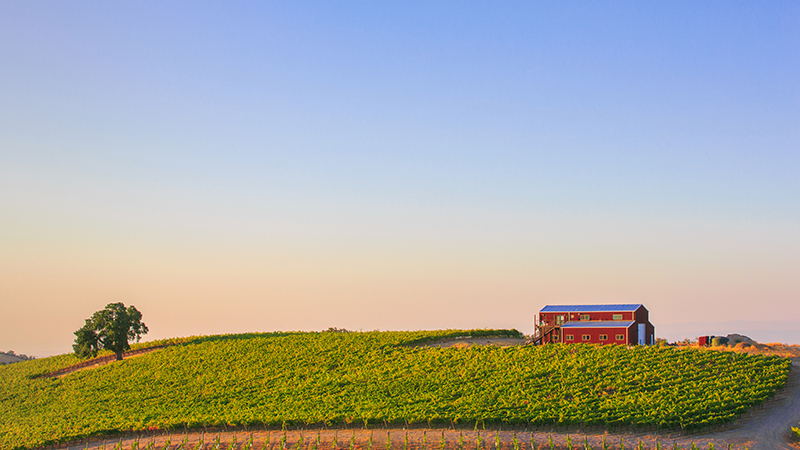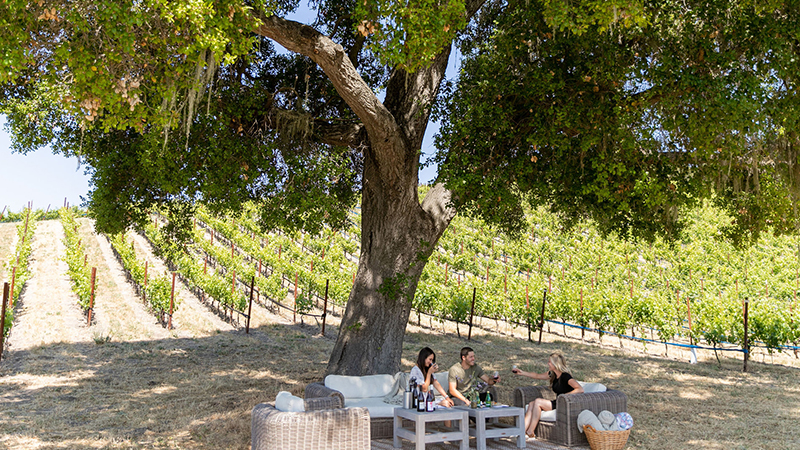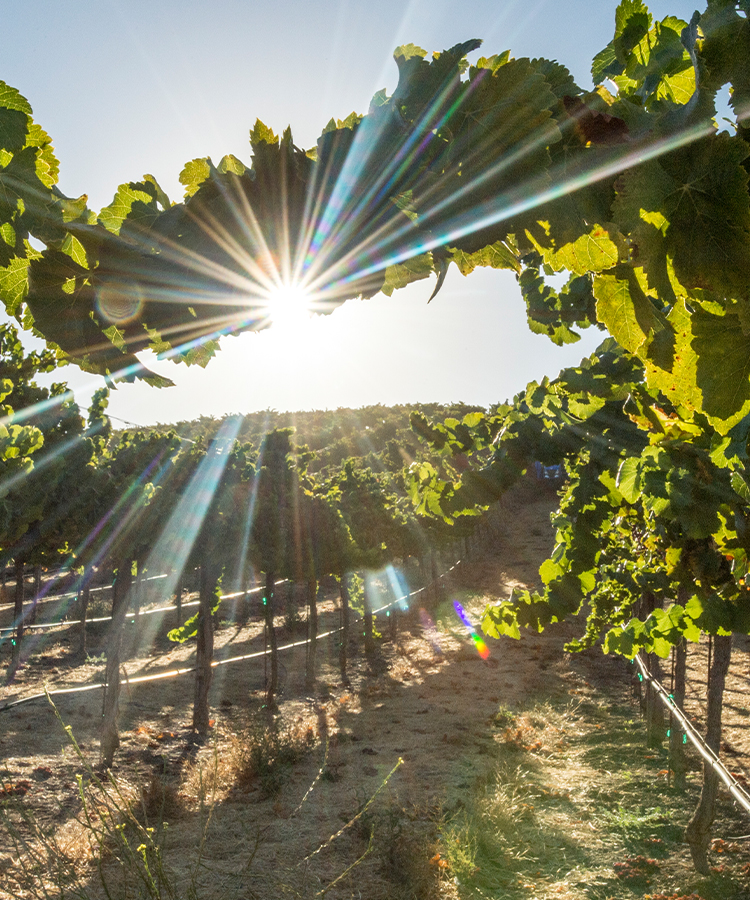
If you’re like us you may be wondering, why is everyone talking about Paso Robles? In recent years, the region has suddenly become one of the most tempting wine destinations in America –– and for good reason.
Although the appellation first gained AVA status back in 1983, the heyday of Paso is just beginning. Regional pioneers and a new wave of exciting, up-and-coming growers are working together to shake things up and reinvent Paso’s past, present, and upcoming winemaking ventures.
Yet even in this dynamic, newfangled wine country, there’s a little something for everyone; and if you love Cabernet, Rhône varieties, or bold red blends at a seriously competitive price point, then Paso Robles is the place for you. So no matter what you’re pouring, read on for what you need to know about Paso Robles.
Always-Evolving Agriculture
Josh Beckett, second-generation winemaker at Peachy Canyon, first moved to Paso Robles from San Diego as a child. “When we came to Paso, it was mostly farmers, cowboys, and laborers, with no art, high-end food, or culture (for the most part)” he recalls. After settling down, the Becketts purchased their first ranch, which comprised 30 acres of walnuts. At the time, walnut trees were a dime a dozen — vineyards, not so much.
Eventually, the Becketts replaced their walnut trees with their very first vines, dedicated to dry-farmed, head-pruned Zinfandel. Petite Sirah and Cabernet shortly followed. In 1988, Beckett’s parents built their own winery, Peachy Canyon, and planted it to 100 percent Zinfandel, while still sourcing other red varieties. Although the region remained relatively unknown on the consumer market, things — including winemaking — were fervently progressing.
Beckett describes the region’s winemakers of today as “more creative than ever,” which he credits to the collaboration of regional newcomers and long-standing OGs, as well as the replanting of new clones and varieties. Names like Tablas Creek, Austin Hope, JUSTIN, and L’Aventure, which once were only known in California, have since become staples on wine bar lists nationwide, with regular critical acclaim from top publications.
A Wine for Every Palate
Amanda Wittstrom Higgins, founder of Wine Speak, Dream Big Darling, and fourth generation of the region, is also no stranger to Paso’s evolution, much of which she credits to its viticultural diversity. Her family is one of the three involved at Ancient Peaks Winery, an estate built on 14,000 acres of land. Higgins notes that, although the predominant grape was (and still is) Cabernet Sauvignon, there are a handful of other varieties defining the region now, specifically Merlot, Zinfandel, Syrah, and Chardonnay. Although the bold-red wine lover will certainly find themselves in good company, fans of rich, full-bodied whites will also have plenty of options to explore.

Higgins cites that a plethora of grape varieties are able to thrive within the region’s limits because of its numerous microclimates and soil types. The western boundary of the AVA sits just 12 to 14 miles from the Pacific Ocean and is home to calcium-rich soils laden with oyster shells. “Then, just 400 to 500 yards away, you’re in Monterey shale, and on the eastern side of the AVA, it’s very desert-like,” she says, describing the differences that span the region’s 600,000 acres.
Underdog Spirit
Throughout its mosaic of soil types and microclimates, Paso Robles unanimously remains approachable and accessible, ready to welcome visitors (and burgeoning winemakers) with open arms. “If you’re looking for an opportunity to make your mark on the industry, as well as find a welcoming community, and purchase land at a great quality-to-price ratio, this is it,” says Higgins. Local brands such as J. Lohr, Riboli Family, Hope Family Wines, Castoro, Eberle, and even her family’s own Ancient Peaks all share humble beginnings in the region; and despite the wide distribution they’ve since found, each continues to foster that same underdog spirit today.
This open-arms attitude attracted Elena Martinez and Stanley Barrios, who founded TOP Winery in 2014. “We picked Paso Robles because it was an AVA that we saw potential in, and also because the producers in the area were open to welcoming outsiders like ourselves into the community,” says Martinez. In six years, their production has grown from a mere 200 cases to 3,600 cases annually.
Unforgettable Experiences
We get it — despite our dreams, most of us aren’t picking up and moving to wine country anytime soon (although after a trip to the region, you may heavily consider it!) However, those looking to journey through wine country in an authentic way certainly won’t be disappointed by Paso. Higgins notes that there are currently over 150 tasting rooms and hospitality facilities in the region, most of which offer tasty provisions and breathtaking views in addition to wine tasting.

“It’s a beautiful yet casual place to visit,” she says, adding that those looking for a luxurious experience can certainly find that here, too, though the region is best known for its country charm. “For consumers looking for real and authentic experiences based around and surrounded by beautiful agriculture, this is the place to come and visit,” she says. For tasty Rhône-inspired blends produced from organic and biodynamically farmed fruit, a visit to Booker Wines is a must. Then for a sprawling, extensive tasting, Higgins’ own Ancient Peaks brand features 18 different cuvées in its lineup.
Otherwise, those looking for a Cab-focused offering will get their fill at Hope Family Wines or DAOU. Over the past decade, DAOU has continued to impress and helped provide the aforementioned “luxurious experience” to countless visitors. Its team has reshaped Paso’s hospitality and tasting scene and now boasts an essentially perfected guest experience. Those looking to peruse exclusive, high-end brands and tastings should visit the winery, or other favorites like Clos Solene, Epoch Estate, and LAW.
Wines of Collaboration
Has your vineyard wanderlust kicked in yet? In case you still have doubts, the region’s emphasis on collaboration over competition promises to seal the deal. Chris Taranto, communications director for Paso Robles Wine Country Alliance for over 14 years, says that he’s seen Paso’s wine country grow into its potential. “Many brands were making great wines here, but as new thoughts, techniques, tools, and practices entered into the region those legacy brands didn’t drop anchor,” he says, adding that instead, growers chose to collaborate and go with the flow of the new influences.
“This is what Paso is about: the camaraderie that encourages growth by working with your neighbors and colleagues to elevate the quality of wine grapes and wines that bear the Paso Robles American Viticultural name on the label,” he says. Martinez agrees: “Our success is that of our neighbors — we’ll probably be more successful if they also continue to succeed.”
What’s Next
So what can consumers expect from Paso Robles? According to Higgins, more incredible wines at reasonable prices that will continue to attract visitors to the region. Martinez agrees. “Our community is focusing on farming and hospitality,” she explains, calling out the new wave of wine enthusiasts who are discovering the AVA — meaning that wine lovers new to visiting the region will never find themselves alone for too long. “It’s exciting to know our community is doing something right and that we are part of this growing wine region,” she says. “Sky’s the limit!”
“Paso Robles is a truly special region that is defined by its authenticity and camaraderie,” says Joel Peterson, executive director of the Paso Robles Wine Country Alliance. Peterson highlights the region’s natural resources, innovative spirit, and beautiful wines as reasons why any wine lover would find themselves enamored of the area. “We’re acknowledged for not only our beautiful wines and the diversity of varieties, but also for the experiences we offer visitors,” he says. Paso’s unmatched hospitality hasn’t simply enticed wide-eyed aficionados to visit, but additionally, to return.
Beyond the (albeit, delicious) wines, it’s the welcoming attitude, casual demeanor, and overall spirit of friendship and hospitality that keeps consumers and winemakers coming back for more.
“It is an incredible place that still welcomes newcomers to the game, and celebrates those who’ve laid the groundwork for us to reach this point,” says Peterson. “I’m so excited for this region, the runway is long for our continued success.” We’re already packing our bags — who’s coming with?
This article is sponsored by the Paso Robles Wine Country Alliance
